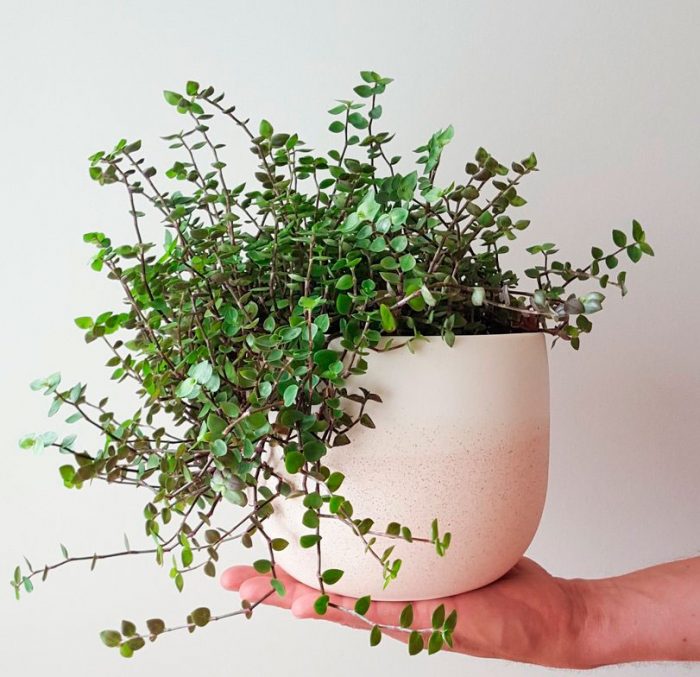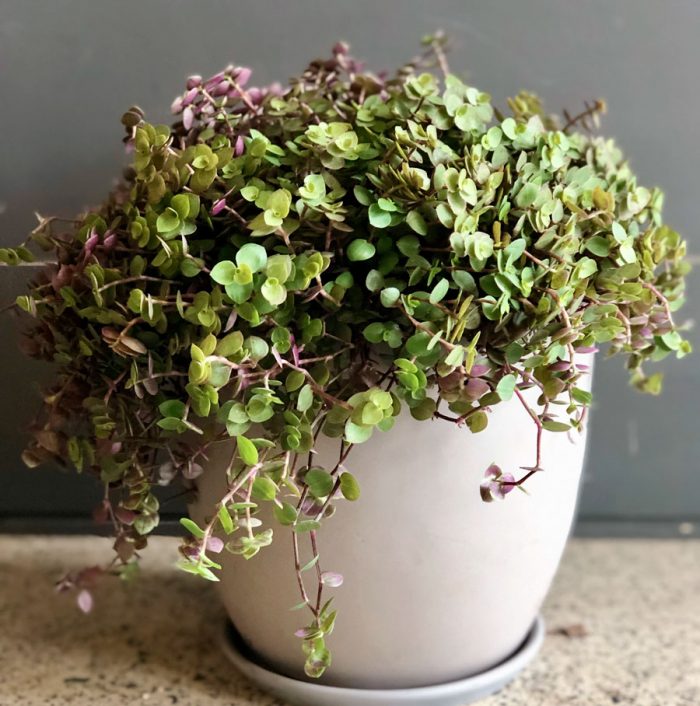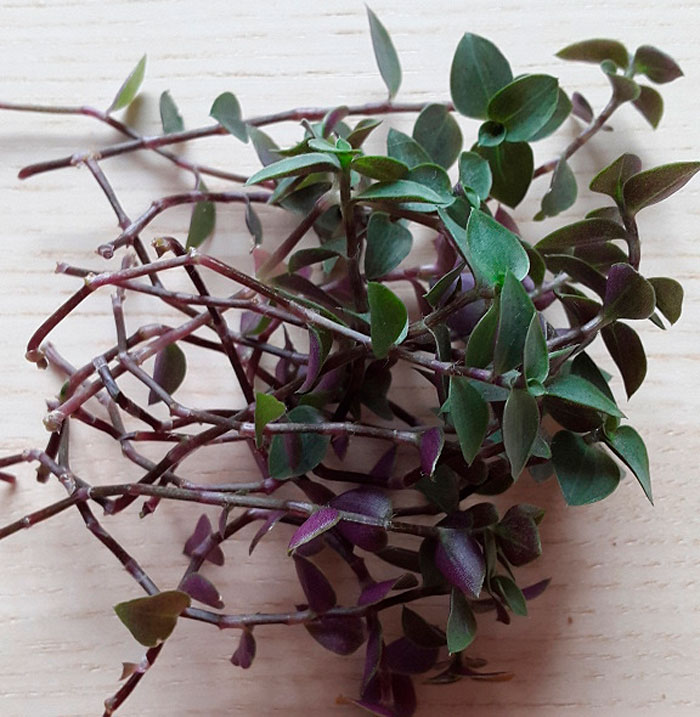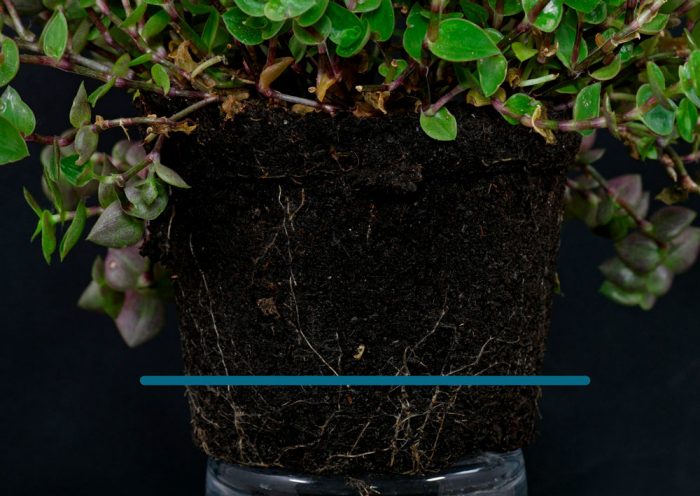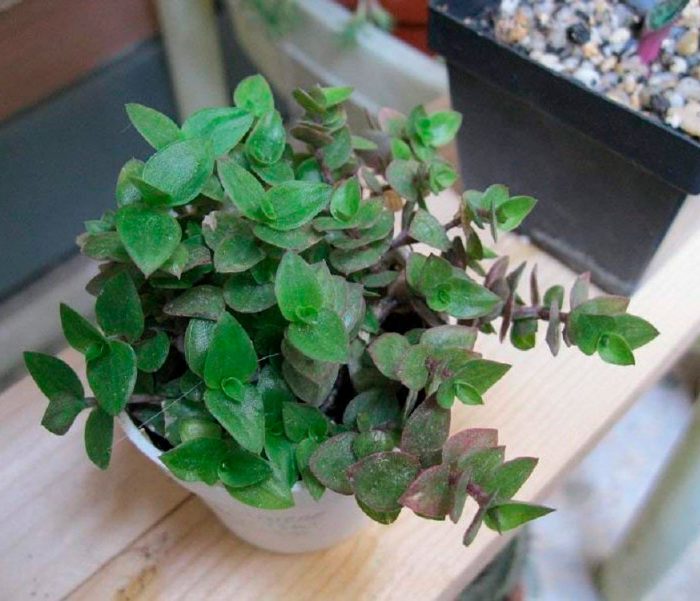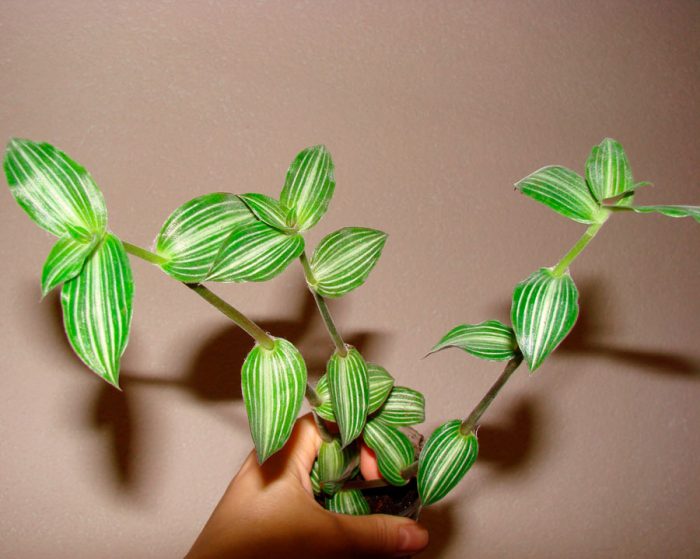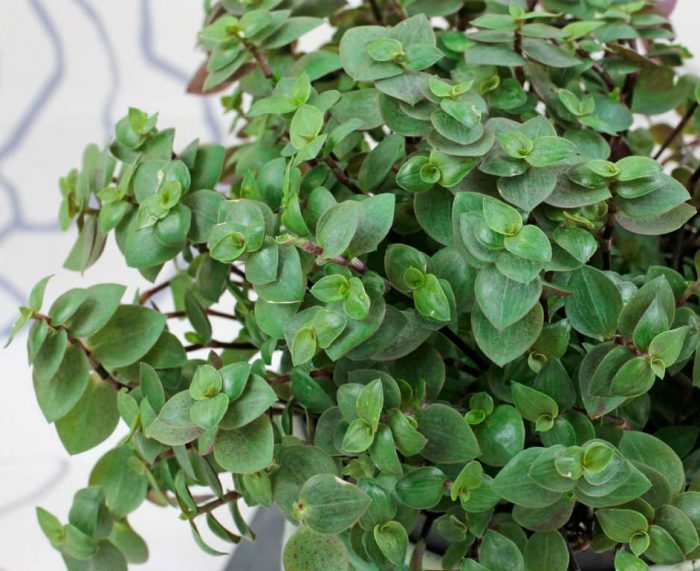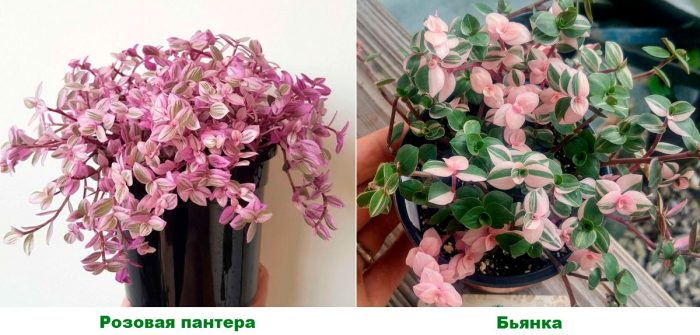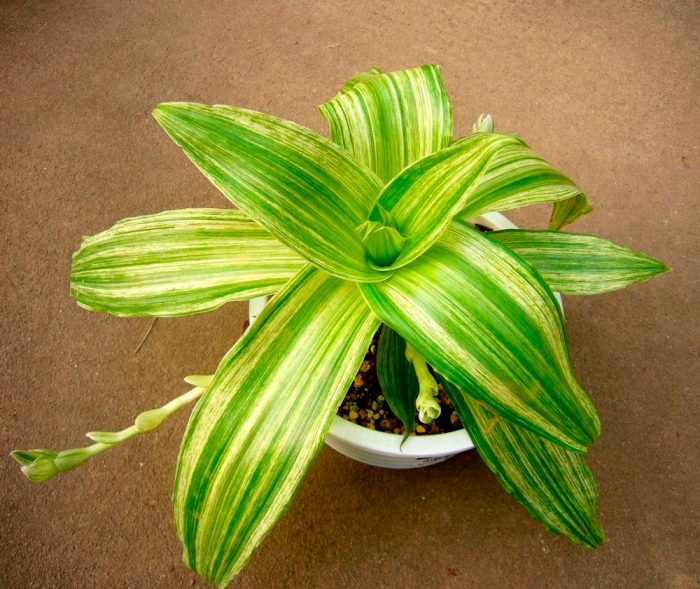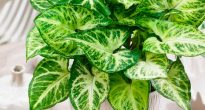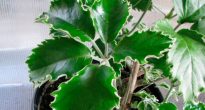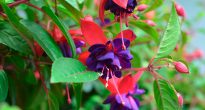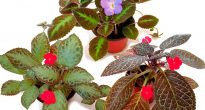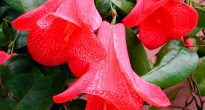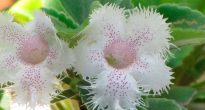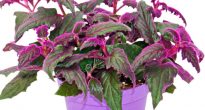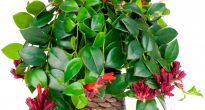A perennial herbaceous evergreen plant Callisia is a member of the Kommelin family. In nature, the flower is found in South and Central America, as well as the Antilles, while it prefers to grow in shade and with high humidity in the subtropics and tropics. The genus consists of 12 species, some of which are cultivated at home. The name "callisia" is derived from two Greek words, translated as "beautiful" and "lily". However, this plant is not closely related to the lily, but to the Tradescantia.
Content
Brief description of cultivation
- Bloom... At home, the flowering of callis is a rather rare occurrence. As a rule, this happens in the last summer or first autumn weeks.
- Illumination... Grows well in low shade or in diffuse bright lighting.
- Temperature regime... In the spring-summer period - from 20 to 24 degrees, and in the cold season - from 16 to 18 degrees. Make sure that the room is not colder than 14 degrees.
- Watering... During the growing season, the bush is watered immediately after the top layer of the substrate dries. In winter, the soil mixture is moistened only after it dries out to a depth of 1/3 part.
- Humidity... Needs high humidity. On hot days, it is necessary to systematically moisten the foliage with a spray bottle.
- Fertilizer... The flower is fed in April-October 1 time in 15 days, for this they use a solution of the mineral complex. In other months, the plant is not fed.
- Dormant period... November – March.
- Transfer... While the bush is young, it is transplanted regularly once a year, and older specimens are subjected to this procedure less often (1 time in 2 or 3 years).
- Reproduction... Layering, apical cuttings and rhizome division.
- Diseases... The decorativeness of the plant may suffer due to improper care or inappropriate growing conditions.
- Pests... Spider mites and thrips.
- Properties... The flower reacts extremely negatively to tobacco smoke.
Callisia features
Despite the fact that callisia can bloom indoors, it is cultivated as an ornamental deciduous plant. At home, 4 types of callisia are most often grown: navicular, fragrant (golden mustache), creeping and graceful. As a rule, all these species are grown as ampelous crops, while fragrant callis is considered a healing plant.
Callisia care at home
Lighting and location selection
A room collision needs a lot of bright light to be diffused. Be sure to shade the bush from direct sunlight. If the room is sunny, then the bush can be placed away from the window. It is highly undesirable to place this plant in the kitchen, because it reacts negatively to various vapors, tobacco smoke, impurities in the air, etc. to the street or to the balcony.
Callisia can decorate not only your apartment or summer cottage, she also feels quite normal in the office. However, special attention should be paid to ventilation. Avoid the appearance of a draft, as it is even more dangerous for the plant than stuffiness.
Temperature regime
Callisia feels fine in summer at temperatures from 20 to 24 degrees, and in winter - from 16 to 20 degrees. But remember that the flower must be protected from cold and sudden changes in temperature. Make sure that the room is not colder than 14 degrees in winter.
Watering
In spring and summer, soft water is used to irrigate collisions, the temperature of which should be close to room temperature. The substrate in the pot is moistened immediately after its top layer dries. In the autumn and winter, the collision is watered less often and more poorly, especially if it is in a cool room. But at the same time, remember that the soil mixture in the pot should not completely dry out, as this can lead to the death of the bush. Also, make sure that during watering the liquid does not fall into the middle of the leaf outlet, otherwise the plant may rot.
Air humidity
Since the collision comes from the tropics, it needs high humidity. Particular attention should be paid to this on hot summer days and in winter, when heating appliances are working in the room. In order to protect the flower from the harmful effects of excessively dry air, it should be regularly humidified from a spray bottle, if possible, you can use a household humidifier.
Top dressing
The plant needs feeding from April to October. They are carried out with a frequency of 1 time in 2 weeks, using a mineral complex for indoor plants. At other times, the bushes are not fed.
Callisia transplant
While the flower is young, it needs frequent regular replanting, which is carried out once a year. When the bush grows up, they begin to transplant it 1 time in 2 or 3 years.
The new container should be 20 mm larger than the old one. It is filled ¼ of its height with a drainage layer consisting of pebbles or expanded clay. Using the transshipment method, transplant the bush into a new container, and fill the existing voids with a soil mixture consisting of sand, humus, leaf and sod soil (1: 1: 1: 1). The transplanted flower must be well moistened.
Some growers believe that callisia does not need transplantation. Instead, it is better to take a stalk from an old bush and grow a new flower from it. Of course, if the bush in the lower part is very bare, then it is better to do just that. But if you take good care of it, then it won't grow out so quickly.


Watch this video on YouTube
Reproduction methods
Callisia can be propagated at any time of the year if desired. To do this, use the same methods as for breeding ivy, tradescantia or hoya.
Cuttings
You will need to cut the apical stalk from the bush, which should have 3 or 4 internodes.Submerge the cut in a glass of water and let the roots grow back. After rooting, the cuttings are planted in a pot. To make the bush lush, several cuttings are planted in one container at once.
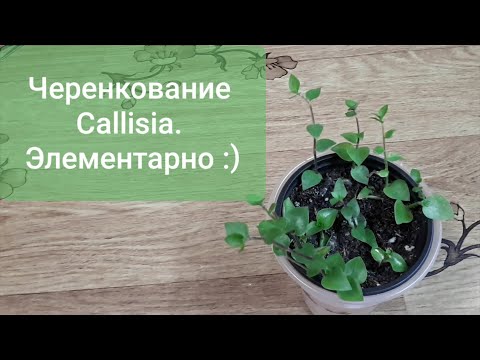

Watch this video on YouTube
Layers
Quite simply, callisia propagates by layering. Take a shoot and just dig it into a container next to the parent bush. If there is no room in the pot, then a small container with earth is placed next to it and the stem is added to it. After the roots appear on it, the stem should be cut off from the bush and planted in an individual container.
Dividing the bush
There is nothing difficult here either. During transplanting, divide the bush into several parts. Then each piece is planted in a separate pot.
Possible problems
Callisia diseases
Indoor callisia is extremely resistant to various diseases. But if you constantly violate the rules of care or the flower is not provided with optimal conditions for existence, then problems may arise with it:
- Drying of the tips of the leaf plates... You water the bush too poorly or rarely, and the air in the room is very dry.
- The shoots are stretched, and the foliage flies... Excessively poor lighting.
- Leaves fly around en masse, and rot appears on the root system... Liquid regularly stagnates in the substrate. This may be due to frequent wetting of the substrate or poor drainage.
Pests
Spider mites and thrips can settle on the plant. These pests are sucking, that is, they suck the juice from the leaf plates, which is why they turn yellow and die off. The bush itself begins to wither. Acaricides are used to get rid of ticks, and insecticides are used for thrips. It is necessary to spray the bush in a well-ventilated room or on the street, since these drugs are dangerous to people.
Types and varieties of callisia with a photo
Callisia elegans, or graceful (Callisia elegans)
In this compact species, the shoots are creeping and geniculate, their length is more than 50 cm. At first, the shoots are erect, but over time they go down. Such a flower is outwardly very similar to Tradescantia. Its height can vary from 0.3 to 0.4 m. On the surface of the shoots and foliage, there is a velvety pubescence to the touch. Oval-shaped foliage without petiole at the tops is pointed. In length, it reaches about 60 mm, while the seamy surface is painted in a greenish-purple hue, and the front surface is dark green with silvery stripes. White flowers appear at the tops of the stems. Pay attention to the fact that after 2 years the plant loses its decorative effect: the foliage becomes duller and thinner. Restore callisia by layers or cuttings.
This species is quite variable. The fact is that its decorative effect is in direct proportion to the growing conditions and variety. In such a succulent plant, shoots in the nodes take root very quickly. Its succulent lanceolate leaf plates are two-row, and they are strongly concave, there is a longitudinal hollow. The seamy surface of the foliage is violet-brown, and the front surface is greenish-bronze, in sunlight it shimmers red. The foliage is devoid of pubescence, however, along the line that ascends from the sinus, there are short villi. The width of the sheet plates is 15 mm and the length is 20 mm.
Callisia creeping (Callisia repens)
The bush reaches about 30 centimeters in diameter, and up to 20 centimeters in height. Shoots are purple or pale red and rather thin. They are decorated with small rich green leaf plates covered with lilac specks, they have a heart-shaped shape and are arranged in 2 rows. Flowers that are not highly decorative are painted in a white shade. In the garden, this species is grown as a ground cover, and in room culture, the bushes are planted in suspended structures.
Garden forms:
- Bianca... Delicate shoots are painted in a purple-reddish hue, while small leaf plates have a rich green color.
- Pink Panther... The foliage of this plant is green-pink, and it is painted in stripes.
Also, the following varieties of this species are popular among gardeners: Noum Popula, Pink Lady and Tortl.
Callisia fragrant, or Thai (Callisia fragrans)
The people also call this species a golden mustache, live hair, corn, Far Eastern mustache, homemade ginseng. This type of callisia differs from the others grown at home in that it has a larger bush. Its height often reaches about 150 cm. But remember that such a plant needs good support, otherwise it can break under its own weight.
Such a plant has 2 types of shoots:
- fleshy short, upright growing stems, decorated with large leaf rosettes at the tops;
- tubular long horizontally located processes (articulate whiskers), which are necessary for the flower to "conquer" new territories.
Large, leathery to the touch, leaf plates are quite fragrant and painted in a dark green tint. Their width is about 6 centimeters, and their length is up to 30 centimeters. The seamy surface of the foliage is matte, and the front is shiny. If the bush is in a well-lit place, then its foliage acquires a pinkish tint.
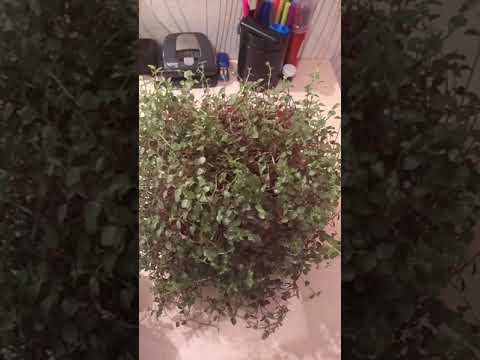

Watch this video on YouTube

